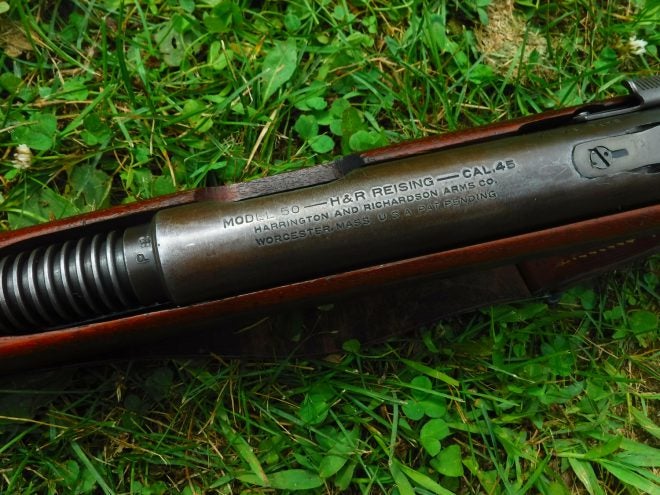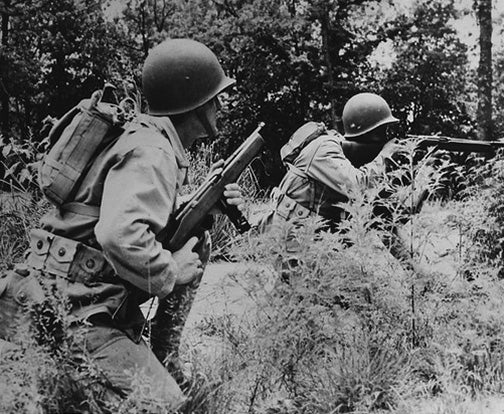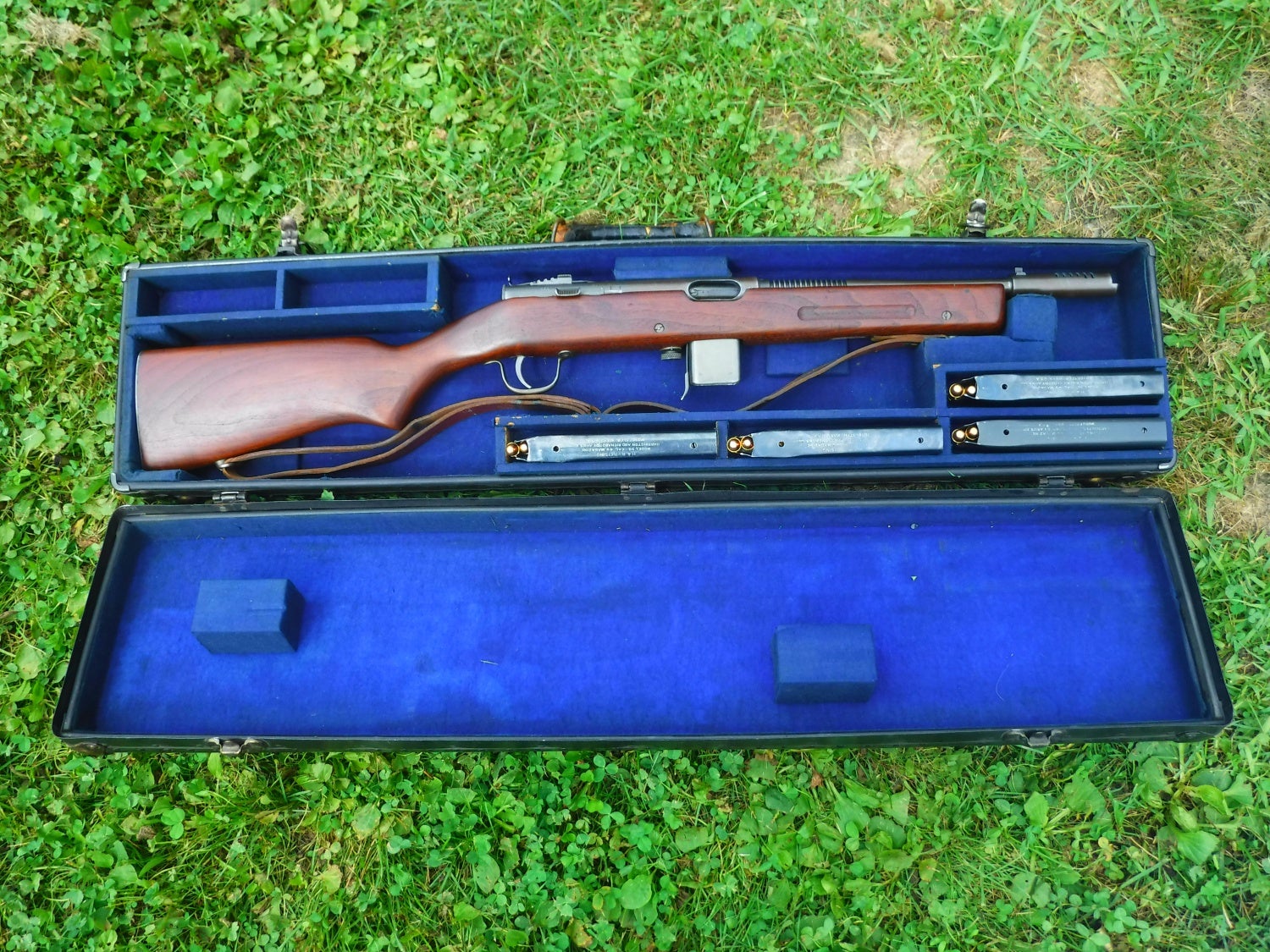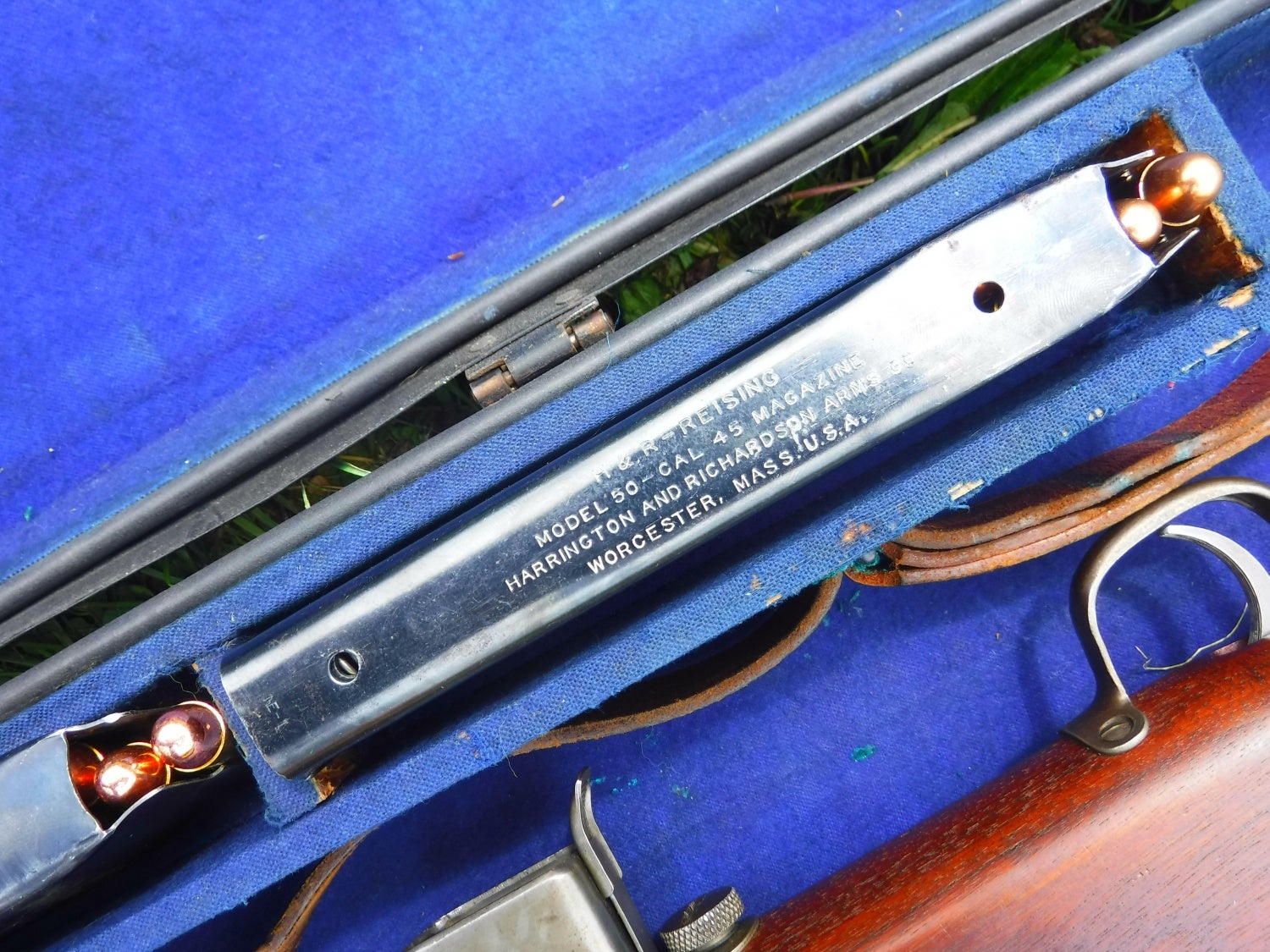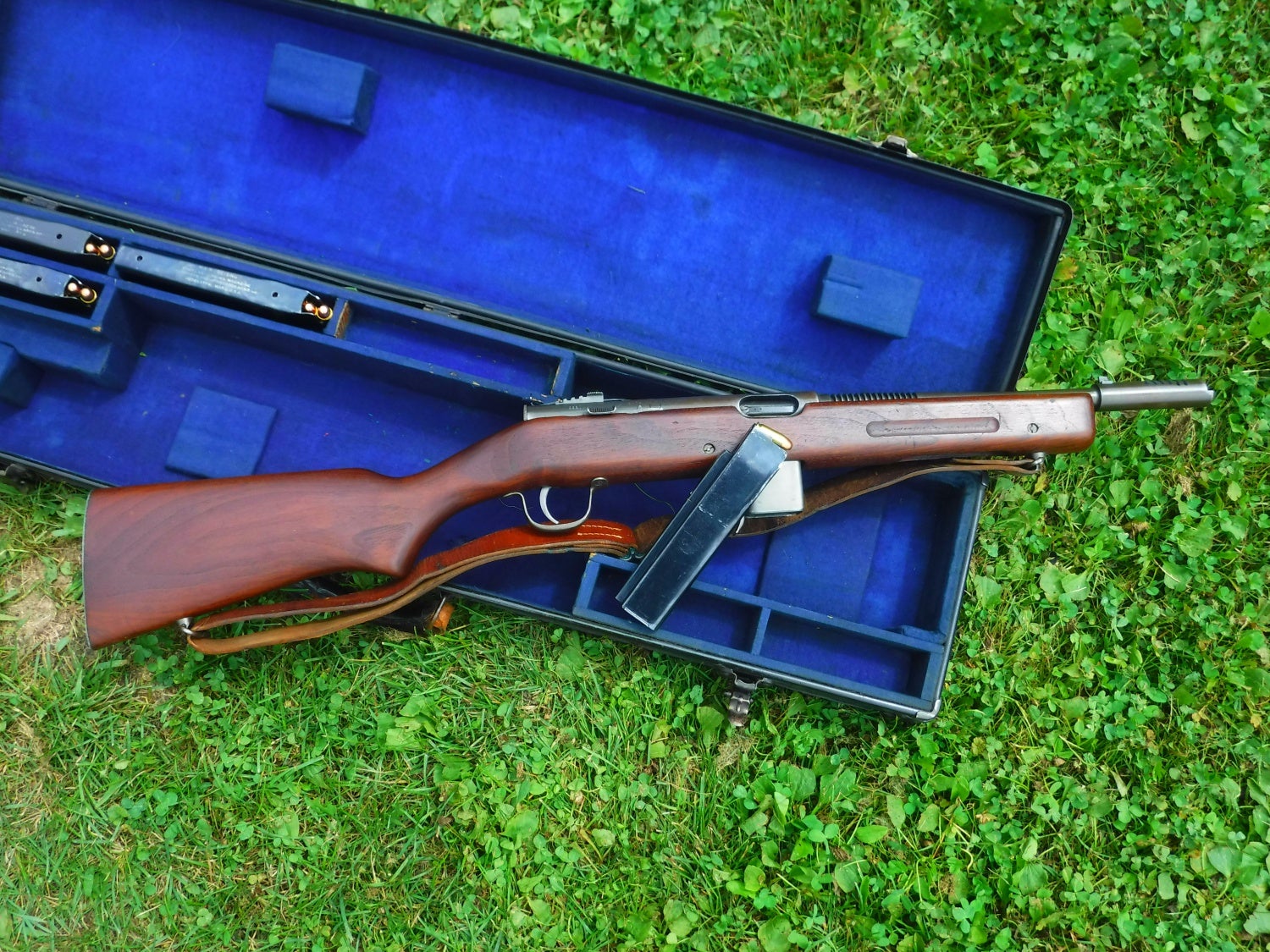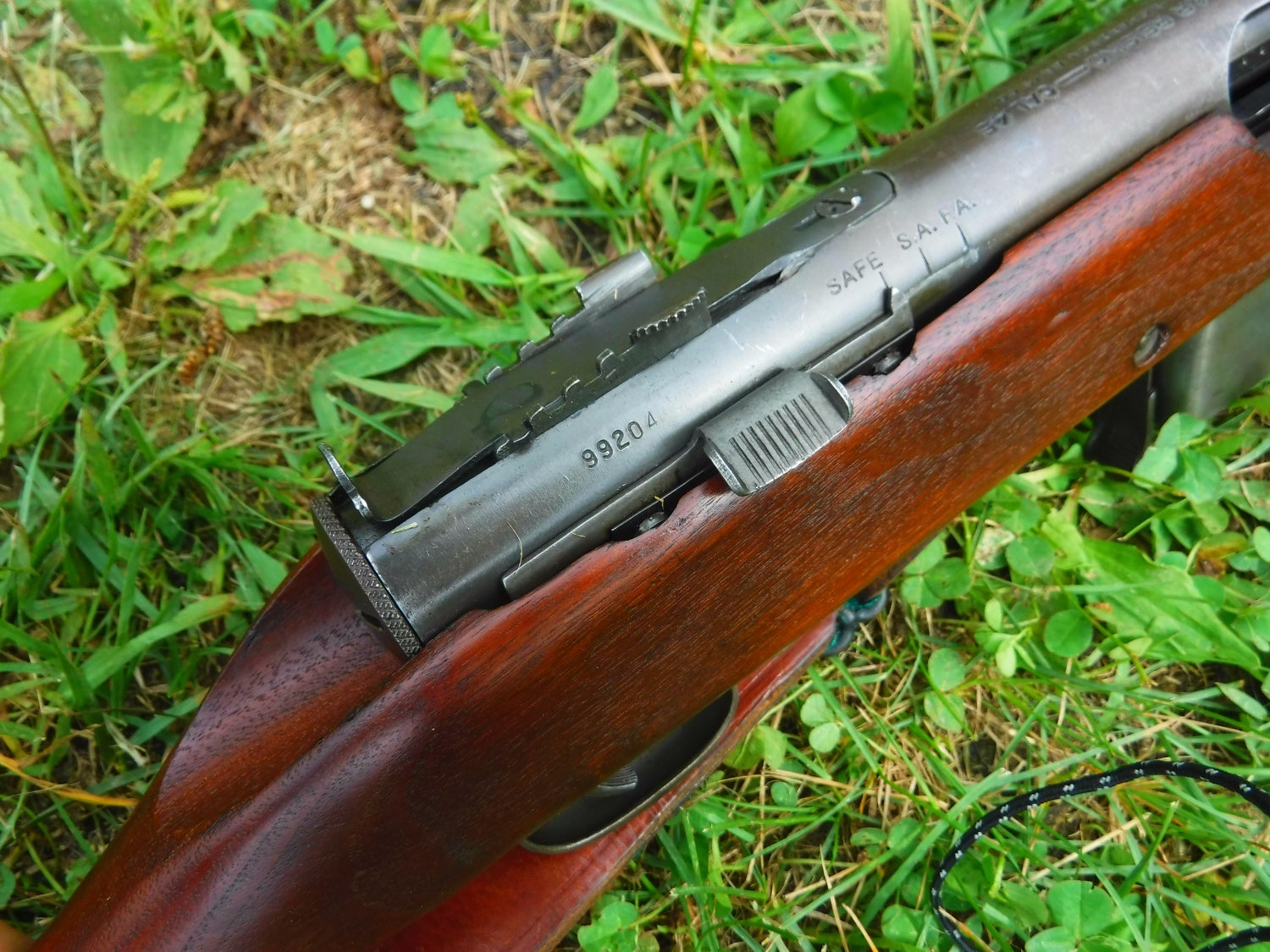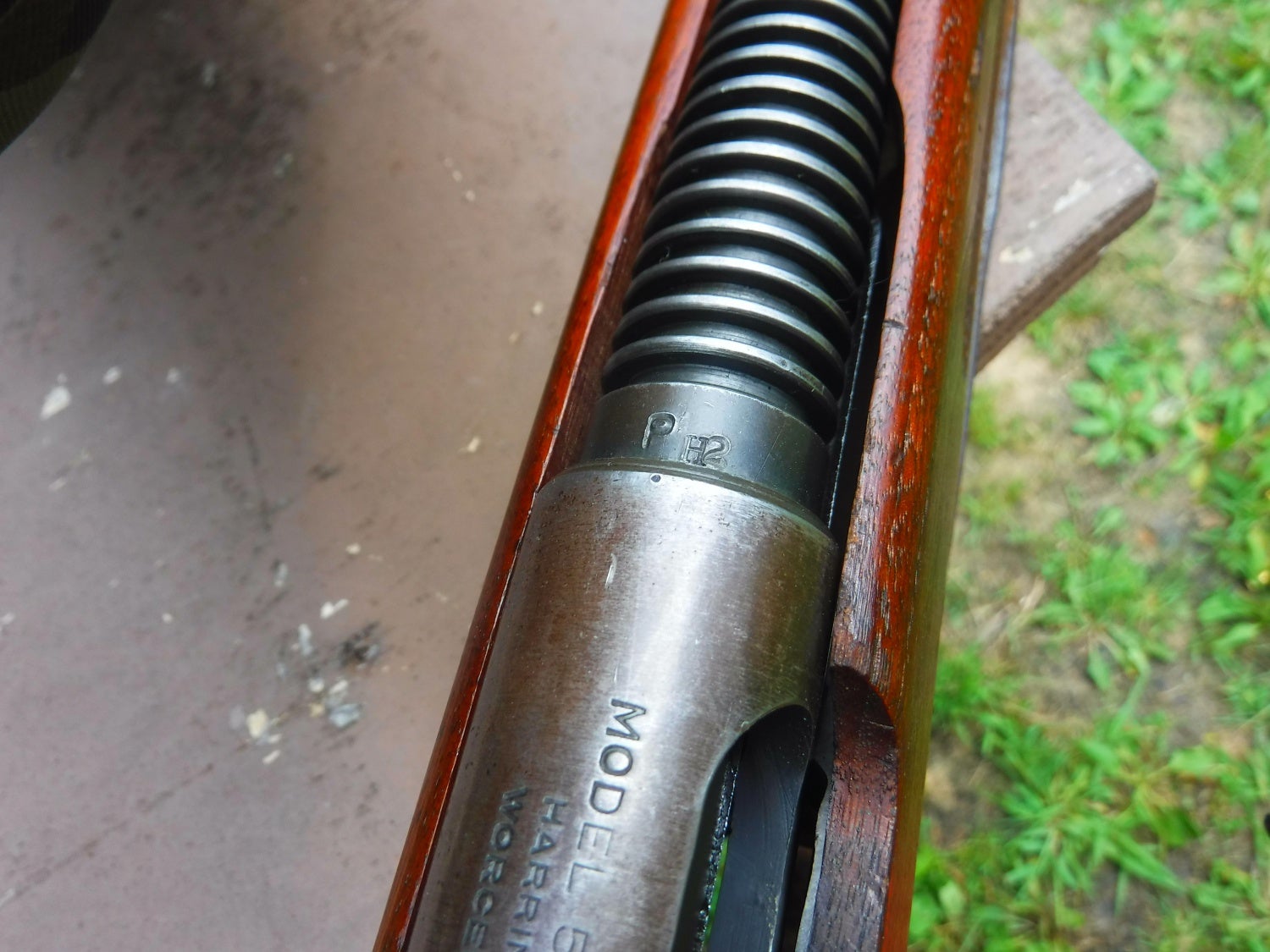This post is part of two others, about a recent range outing with some very historically interesting small arms, the DeLisle commando carbine, the M50 Reising submachine gun, and the Russian PM1910 Maxim heavy machine gun. All of these are NFA items (either Class III or suppressed) and the owner was extremely kind enough to take me out and blow over a thousand rounds through his small arms.
The M50, M55, and M60 Reising gained an infamous reputation during World War Two as the sort of little train that really couldn’t. The design and production were finalized in 1938 by Eugene Reising, working for Harrington & Richardson. Interestingly enough, Reising worked alongside John Browning the early 1900s and even contributed to certain design aspects of the 1911. The .45 ACP submachine gun was originally intended to be a competitor against the then M1928 Thompson. Compared in cost and length of time spent in production, the Thompson was no match for the Reising, being relatively complicated to produce. In actual operation on the range, they were almost equals as well, with the Thompson being perhaps the easier of the two to be controllable on full auto (the Thompson was almost 11 pounds compared to the Reising’s almost 7 pounds). However, once the two got in theater, the contrast in quality was horribly evident. The U.S. Army never had a need for the Reising because of the logistical priorities, but the Marines couldn’t get enough Thompsons so bought the Reisings as a sort of stop gap in the early parts of the island hopping campaign. The results were abysmal, with malfunctions and jams galore among the new submachine gun. There are reports from Marine units wherein a unit received a shipment of Reisings, and rather than issue them out to Marines, they instead dumped them in the nearest water source.
The problem was that the Reising as a submachine gun in use in the United States, didn’t have much of a problem when used by Coast Guard units, Law Enforcement, and other authorities. But when the gun was introduced to the heat and temperatures of the tropics where it hadn’t been thoroughly tested, or designed for, all sorts of problems ensued.
Three versions of the submachine gun were produced, the standard M50 with full length wooden stock, the M55 with folding wire stock and shorter barrel, and the M60, a Law Enforcement civilian legal version with a 16.5 inch barrel and available only in semiautomatic. Towards the end of the war, the Reising saw less and less action as supplies of Thompsons, especially the M1 and M1A1 variants became more readily pressed into service. Post war the Reising saw success with many police departments in the United States, until adoption of more modern submachine guns and rifles replaced it. Today you can own an original Reising for as little as $10,000 and speed reload to your hearts content with magazines that cost $100 a piece! This is why you don’t see me dropping them in the video…
Everything about the Reising almost screams out “No” when it comes to where controls should be and where they aren’t. For example, the selector switch is nowhere near readily accessible by a flick of the finger without breaking your grip. The magazine release is this awkward lever located on the magazine well itself, that almost seems to work counter intuitively when trying to pull out a magazine. In addition the magazine just begs to be held as a forward grip, which is probably a common cause for feeding problems because of hand pressure on the exposed magazine. Another point is that unlike the Thompson with a choice of either 30 or 20 rounds, the Reising almost short shifts itself by only having a 12 or 20 round choice of capacity. The charging lever can’t be locked to the rear and is located underneath the barrel, through a slot in the stock. Imagine was happens when the barrels gets hot? Yeap, your itty bitty finger is sliding right up next to it!
But, I did enjoy shooting it. The submachine gun functioned very well on full auto and on semiautomatic, grouping nicely at 50 meters. True to its reputation it suffered a malfunction or two, but nothing that really hung the gun up. Recoil was significantly more than a Thompson, but nothing that you couldn’t control using forward pressure and short bursts. We mag dumped a couple magazines of 20 so it really wasn’t all that bad. One point I did admire was how quick it was able to clear a malfunction or charge the closed bolt, with just a swipe of my finger instead of bringing my hand off the gun.
Given its performance in the jungles of the Pacific, I wouldn’t want to be an NCO or officer with the thing as my primary weapon system. Maybe if I was in a support capacity as a radio operator, the lighter folding stock M55 would be a better choice over the .30 caliber M1 carbine with its diminutive round but only in a defensive position and not as an offensive one.
 Your Privacy Choices
Your Privacy Choices
